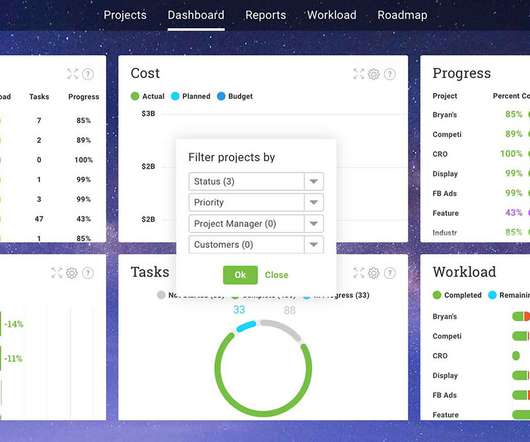Top 10 Project Management Methodologies – An Overview
ProjectManager.com
NOVEMBER 22, 2021
When to Use It: The Waterfall approach is great for manufacturing and construction projects , which are highly structured, and when it’s too expensive to pivot or change anything after the fact. Critical Chain Project Management (CCPM). When to Use It: CPM works better with smaller or mid-sized projects. Lean Methodology.














Let's personalize your content